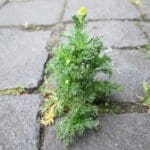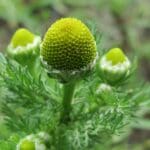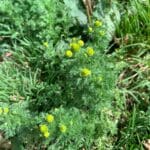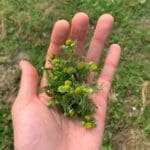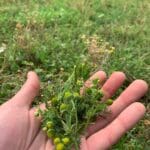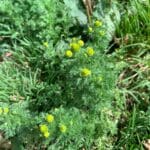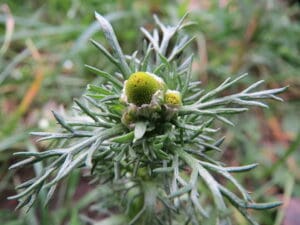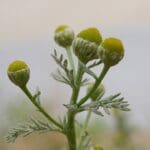Pineapple Weed / Spring / Summer / Edible
Pineapple Weed is one of those plants that grows in the most obscure places from cracks in the pavements to walls. Often overlooked, its packed with flavour – it tastes like Pineapple – how incredible.
Common names
Pineapple Weed, Wild Chamomile, Disc Mayweed, Rayless Mayweed
Botanical name
Matricaria discoidea
Scientific Classification
Kingdom – Plantae
Order –Asterales
Family – Asteraceae
Physical characteristics
Leaves
The leaves are very fine and feathery, when crushed they have a strong pineapple scent.
Flowers
The flowers have no petals, just a yellow centre. When crushed, the petals, like the leaves, emit a pineapple scent. Overall the flower does look a bit like a miniature pineapple. Flowers normally appear between May-November.
Habitat
Throughout UK, Europe, Asia, and America. It is thought Pineapple weed was brought to the UK from America, though it is a native of Asia, as a garden plant.
Likes to grow on very stony, scrubby soil. It is often found in rubble piles and driveways, and places where there is a lot of footfall – gateways, footpaths, etc
Known hazards
There is some circumstantial evidence that some people may display allergies to this plant, so only a small amount is advised first
Could be confused with
German Chamomile or Mayweed, neither of which is poisonous. Mayweed is scentless and German Chamomile doesn’t smell of pineapple
Edible uses
The flowers can be eaten raw or in salads, or to make jellies, syrups and cordials. Leaves and flowers can be used to make a fragrant tea
Notes on herbal uses
Pineapple Weed has been used for many uterine conditions, as a sedative, antispasmodic, and anthelmintic (wormer). Please consult your doctor if you have a medical condition
Extra notes from the Foragers
The essential oil myrcene is found in Pineapple Weed. This is an important aromatic in the perfume industry.
Matricaria is derived from the Latin “matrix”, meaning “of the womb”, probably due to the genus’ association with uterine treatments. Discoidea means “without rays” in reference to Pineapple Weed’s lack of petals.
Pineapple Weed has been used to repel insects, by rubbing the juice on the skin, or hanging in a room



